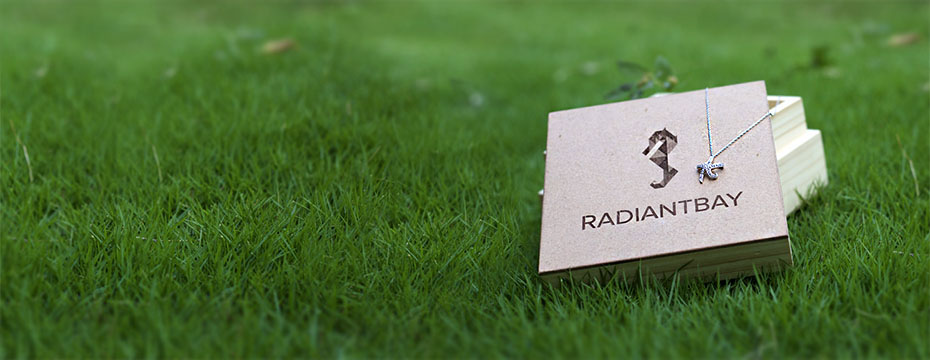
Let’s face it. You’ve got that one piece of jewellery that you simply HAVE to have. Its design is so hauntingly beautiful that it has become that ultimate piece de resistance. It’s invaded your mind and has now successful captured every corner of your imagination. But as you look at it (with your jaws to the floor), have you ever wondered how it was made, or the meticulous craft that goes into the intricate design that you simply cannot get out of your mind?
Well, to answer those questions we are taking you behind the scenes to show you how your Radiant Bay favourites are made. As you will see, every piece of jewellery at Radiant Bay is crafted with painstaking precision using a combination of skilled craftsmen and expert technologies in an 1000+ person manufacturing facility.
STEP 1: Ideation and Design

Before any jewellery is created, our merchandising team first brainstorms themes and ideas, and goes through dozens of sources in search for that perfect inspiration. Once that is established, our 60 person design team starts sketching out numerous designs- somewhere in this heap of designs is that glorious one that you love so much.
STEP 2: Creating a prototype
Now jewellery has evolved from the traditional hammer and chisel that were developed by Neanderthal man over 75,000 years ago. Today, much of our jewellery is made using modern methods and expert technology. To clue you in on the technology that is used, all prototypes of your jewellery are digitally created and then turned into samples using CAD and our hi-tech 3D printer respectively.

A mould of this prototype is then made after it is centrally placed into a rectangular mould, and a resin-like mixture is poured over it. After it has cooled and hardened, the prototype is cut out only to leave an intricate impression structure.
STEP 3: Wax Setting

(From Left to Right) Prepping rubber sheets, Wax moulds set aside to cool
Now this imprint is used to make the metal replica of your design. To do that, we first shoot hot wax into the mould at high pressure. After the wax cools down it is peeled out of the mould, finished, checked for excess wax, and fused onto a ‘wax tree’.

Our skilled craftsmen then individually set the diamonds (that are ethically sourced and conflict-free) into the wax moulds that were soldered onto the tree, now causing it to glitter and gleam.

Today, jewellery can be made using various techniques, so at Radiant Bay we’ve adopted what you call the ‘lost wax’ method. It begins after all the required diamonds have been securely set into its mould, and the wax tree is placed into a flask. A special plaster mixture is then poured into this flask, and after it solidifies it is placed in a furnace to liquefy the wax.
STEP 4: Casting
After 12 hours of baking in the furnace, the plaster hardens and the hot wax is poured out, leaving only the hollow mould in the flask.

While the flask is prepped, a casting machine is filled with raw metal pellets, like the ones in the image.
Once the pellets have melted, the hollow plaster mould is filled with hot molten metal and set aside to harden.
On cooling, the plaster mould is destroyed to retrieve the metal cast, which now looks a lot like a tree with glistening ‘sprouts’.
STEP 5: Cutting, Filing and Polishing

These ‘sprouts’ are then checked and cut from the tree, and later sent for filing. Our skilled workmen work on the casts, buffing and levelling them, taking away all the excess dust and flakes that may have been on its surface. They are again passed through Quality Checkers, who inspect your jewellery for unevenness.

Without diamonds, your jewellery would just be plain dull and boring. After they are filed and buffed, master diamond setters fix the remaining decorative diamonds and gemstones into their prongs. Diamonds that may have come loose during casting are also reset and fitted into place. Jewellery is again checked to ensure that your diamonds are set correctly and securely within the prongs.
Once all the gemstones and diamonds have been set, the cast is then worked on and buffed to make it shiny and glossy. Quality checkers inspected the jewellery for uneven polishing to ensure that they are not over or under polished.

To bring out that inerasable gloss and sparkle, your jewellery is placed in a rhodium bath for a few minutes. This plating also helps to protect your jewellery from daily wear. Quality checks are carried out again to ensure that the jewellery has been evenly plated.
Have you noticed that your jewellery is passed through stringent quality checks after every process? We do this is to ensure that we deliver supreme quality diamond jewellery that captures your wildest imagination.
STEP 6: Certification
After your jewellery has passed all our rigorous checks and inspections, they are sent to BIS for hallmarking gold.
A Brand certificate is provided with every jewellery.
BIS is a national standards organisation in India, who certifies the authenticity of the metal, and ensures that your jewellery conforms to its standards.
STEP 7: Packaging

Your jewellery is then packaged in a velvet pouch, and along with the certification and is placed into our signature wooden box. It is then securely wrapped and placed in our tamper proof envelope.
As you can see, your precious purchase is even more precious to us! We do hope you will share your radiant moments with us: Instagram, Twitter, Facebook.

